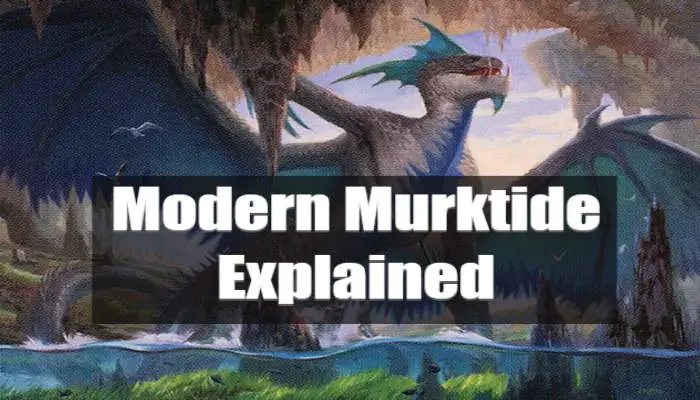Murktide Regent came to Moden in June of 2021 and has since perched itself atop the meta. It is one of the format’s most competitive decks and the focus of today’s article. If you’re interested in the archetype at all you’ve come to the right place. I’ll be covering how the deck works, the key cards within it, where it wants to be at different portions of the game, and how to beat a Modern Murktide deck. Let’s start with a brief overview.
Murktide is a spell slingers deck at heart. It wants to quickly fill the graveyard with instants and sorceries and delve out large a Murktide Regent as early as possible.
With the general game plan out of the way, let’s move on to some of the more in-depth stuff. We’ll go over not only the cards within the deck but why they’re there, some strengths and weaknesses of the archetype, how to sideboard against Modern Murktide, and finally, a full deck list.
Strategy Overview
The namesake card of the deck is, of course, Murktide Regent. Its base stats are a 3/3 flyer for seven mana. However, it has “delve” and will most likely be cast for just two Blue mana. Furthermore, it will enter the battlefield with a +1/+1 for each instant sorcery that was exiled when paying for the devle. So, Murktide can easily be a two-mana 6/6 in most matchups.
That’s not all though – Whenever an instant or sorcery leaves your graveyard it will get an additional +1/+1 counter. This is huge because if you exile cards to cast a second Murktide Regent, the first one will grow even larger. The deck runs a number of cheap burn, control cards, and cantrips to fill its graveyard quickly. While Murktide is the deck’s main win condition, there are a few other threats in the deck. Let’s check them out along with the important non-creature spells.
Key Cards
Interaction
As previously mentioned, the deck wants to quickly fill the graveyard with cheap instants are sorceries. Many of which and low mana removal/burn spells and counterspells to protect Murktide.
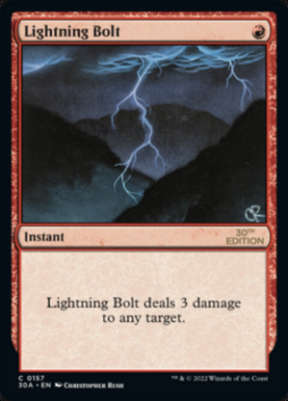
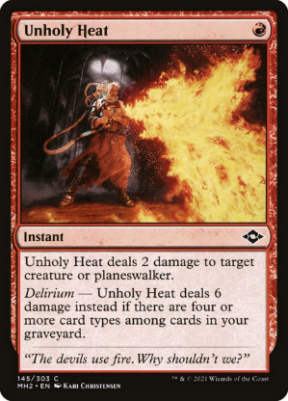
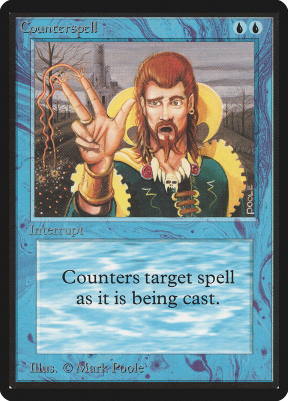
Lightning Bolt
This classic burn/removal spell is always an effective answer to opposing threats and is never a dead card since you can always point it directly at your opponent. It’s cheap, it’s effective, and it’s great for filling the graveyard. You’ll usually see three or four copies in Murktide without fail.
Unholy Heat
Unholy Heat is a much newer card and it is a perfect fit in the deck. The one mana for two damage baseline is ok but where the card shines is the delirium – If there are four or more card types amongst cards in your graveyard you’ll get a massive six damage for your one mana investment.
In a deck that is looking to stock its graveyard anyways, this is amazing. The only catch is that you may turn delirium off when casting Murktide Regent. This is good enough to beat out a fourth copy of Bolt and seeing a 3/4 split in favor of Unholy heat isn’t uncommon.
Counterspell
You don’t want to spend your time and resources filling your yard and delve all your cards into exile to cast a Murktide just to have him removed by a Path to Exile or something. Counterspell is here to make sure that doesn’t happen. It is also a great way to slow down opposing game plans early or counter things looking to exile your graveyard. Four copies of counterspell are common.
Related: Best Counterspells In Magic: The Gathering
Spell Pierce
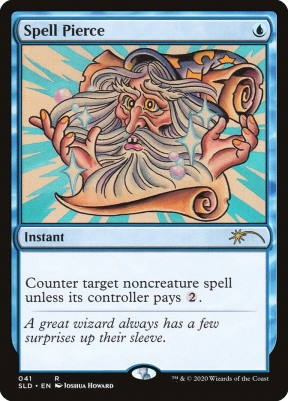
Spell pierce serves a similar purpose as Counterspell. It’s slightly cheaper but it gets worse as the game goes on and opponents have more open mana. That said, the general consensus is that two copies of Spell Pierce is the correct number for Modern. Recently I have seen players running one copy of this and one copy of Minor Misstep.
Cantrips
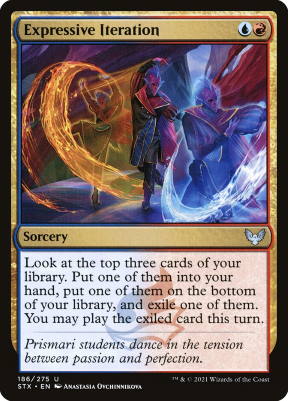
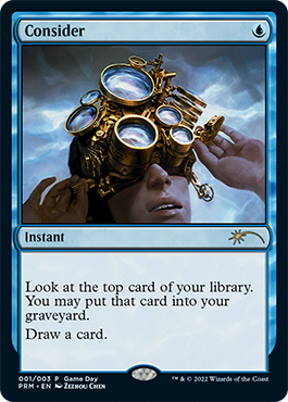
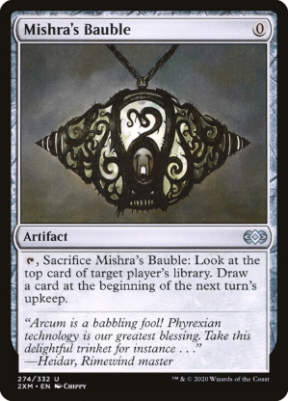
Once again, both of these cards serve the purpose of their respective function and as fodder for delving out your Murktide. Each one is usually a playset in the starting 60.
Expressive iteration
Expressive iteration lets you look at a total of three cards – You get to move one to your hard, put one into exile with the option to cast it, and put one on the bottom of your library. That’s obviously a lot of value and it’s not uncommon to find a Murktide Regent this way while adding Iteration to the graveyard as fuel.
Consider
Consider is a more traditional cantrip that simply replaces itself with a new card. However, you also get to look at the top card of your library and have the option to put it in your graveyard. Not only is this good card selection but is great for adding extra cards to the yard and turning on delirium.
Mishra’s Bauble
Mishra’s Bauble does function as a cantip in the deck. Being an artifact means it can quickly ad to delirium as well. You’ll of course get to look at the top card of either player’s library too, which can be valuable. If you choose to look at your own library, remember that you can crack a fetch and shuffle it away if you don’t like it.
Blood Moon
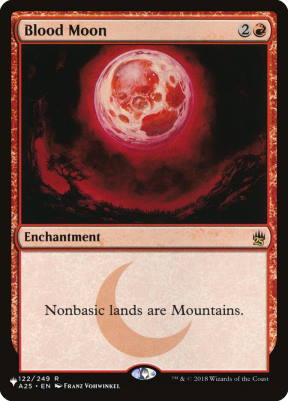
This is a card that can be added to some of the flew spots in the deck, usually as a two-of. To put it simply, Blood Moon hurts quite a few decks, and Murktide decks can support it fairly easily. Just be sure you have access to at least two Blue mana when you cast this so you can still cast Murktide Regent.
Creatures
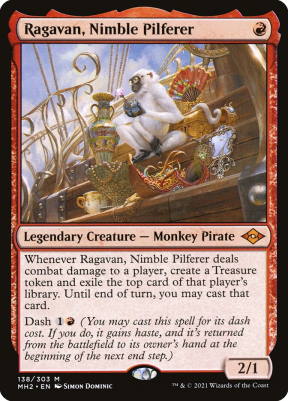
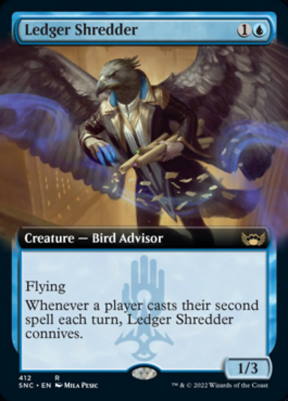
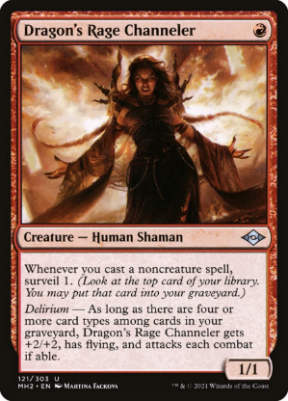
If you read my overview of Modern Breach Combo, these all probably look very familiar. And that’s because there are playsets in both decks. Much like Breach, most of these cards are here for the value they generate and how overall powerful they are.
Ragavan, Nimble Pilferer
Ragavan, Nimble Pilferer is simply one of the best cards in Modern. If you’re in Red and not on a budget, you’re playing Ragavan. He comes down early and starts to apply pressure to opposing life totals, all while stealing cards from the top of their library and giving you the mana to cast them via treasure tokens.
Ledger Shredder
Ledger Shredder is in the deck for two reasons. The main reason is the card selection he brings to the table. Given how low to the ground this deck is, it’s very easy to trigger connive. When you do, you’ll get to draw into new cards but also add cards to your graveyard.
Furthermore, we’ve already discussed that the deck plays four Mishra’s Bauble and where there is Bauble, there’s usually Shredder as well. If you hold your opening hand containing a Bauble and a Shredder, you can wait until turn two (after you’ve cast Ledger Shredder) to cast Bauble and you’ll get an immediate trigger.
In addition to all of that, it’s also an evasive threat that can grow bigger as the game goes on. Between this, Murktide Regent, Dragon’s Rage Channeler with delirium, the deck has 11 creatures with flying.
Dragon’s Rage Channeler
Dragon’s Rage Channeler‘s main purpose is the fact that it surveils, which allows you to put cards into the graveyard to power out Merktide with. Not only does this allow you to fill the graveyard but also lets you be very selective of what you draw.
As mentioned above though, it can be a threat in its own right at times. That said, now is a good time to mention that there will be times when you exile cards to cast a cheap Murktide and you turn delirium offline by doing so. And that’s ok; I just wanted to make you aware of it.
Brazen Borrower
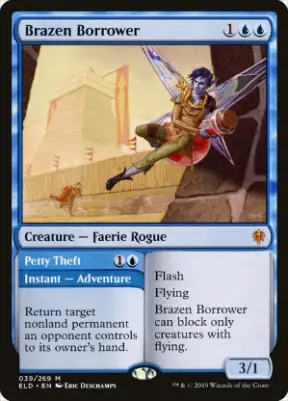
This is not a card that you’ll see in every build and when you do, it’s usually as a single copy. It has a dual function – First, it’s a bounce spell with can return enemy permanents back to their hands. Next, it’s yet another flying threat to help close out games alongside the others.
Mana Base
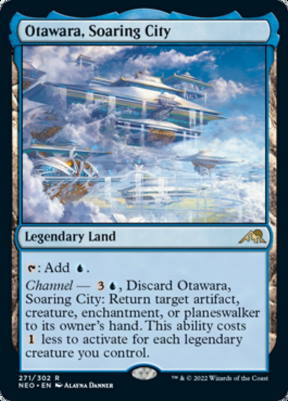
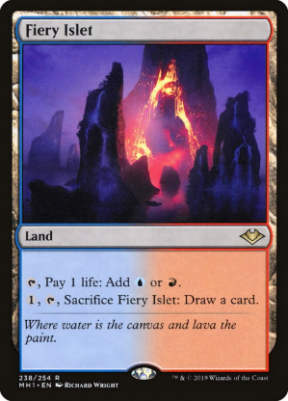
The mana base is pretty straightforward. There’s often one Otawara, Soaring City, one Firey Islet, and around seven fetch lands. The fetch lands obviously fix mana but are also great for contributing extra cards/card types to the graveyard. Aside from that, remember to fetch your basic Islands if you play Blood Moon and that your fetches can change the card that you’ve seen with Bauble, so be careful with that.
How Does The Deck Play – Early, Mid, And Late Game
Here I’ll go over how the deck wants to play and what it wants to be doing in different portions of the game.
Early Game
Both Dragon’s Rage Channeler and Ragavan, Nimble Pilferer are great starts to any game. That said, Channeler is perhaps the best start in terms of getting out an early Murktide.
For example, say you start by cracking a fetch and casting Channeler and then a Mishra’s Bauble – DRC triggers and you surviel a card to the graveyard. That’s a total of three cards in the graveyard, counting Bauble. So, you’re one card away from delirium and/or two cards away from Murktide.
Landing an early game Channeler, Ragavan, or Ledger Shredder all put you very well on the way to a massive turn two or three. I want to mention here that Murktide decks get a lot worse on the draw. The main reason is that spells like Counterspell and Expressive Iteration get worse when your opponent has already had their turn two.
Mid Game
One thing you’ll learn when playing a Modern Murktide Deck is that you need to play flexibly. You are obviously going for big Murktides as early as possible but there is more to the deck. To elaborate, the deck has other creatures that are very good and has plenty of spells to interact with opposing decks. So, it’s important to be able to adapt to gameplay as things change.
If your opponent is devoting all their resources to negating Murktide Regent (perhaps with counterspells or graveyard hate) and is leaving smaller creatures on
Expressive Iteration and Consider are great for setting up your draws and making sure you have whatever it is that you need. So, use them to your advantage.
Late Game
If you’ve been playing the long game of your own volition, the late game isn’t a bad spot to be. However, there are a few things that Murktide pilots should keep in mind when trying to close out games. First, play to your outs. As mentioned, you can have a very strong strategy even outside of casting your Murktide Regent. Don’t get caught up on one win condition and neglect your other paths to victory.
Another thing to keep in mind is that the deck can fill the graveyard very quickly. If someone is able to deal with your graveyard, it’ll set you back but it’s still possible to power out large Murktides later in the game. So, you definitely shouldn’t concede to having your graveyard exiled automatically.
How To Beat Murktide
Now we’ll be switching from the role of the pilot to that of a Murktide opponent and going over how to beat a Murktide deck.
- Deal With The Graveyard – Exiling the graveyard early often stops the deck’s ability to get out large Murktide Regents early and is a key to victory.
- Don’t Neglect Other Threats – With the namesake card being such a threat it can be easy to focus on it alone. However, it’s important to deal with early Dragon’s Rage Channeler and Ragavan, Nimble Pilferer as well. Removing DRC as soon as possible will slow the deck down quite a bit.
- Apply Steady Pressure – This is especially important if you’re playing an aggro deck. Applying pressure to the Murktide deck forces them to go for Murktide faster than they’d like to and can result in some less-than-optimal plays on their part.
How To Sideboard Against Modern Murktide
Here are some suggestions for games two and three when playing against the deck.
Graveyard Hate
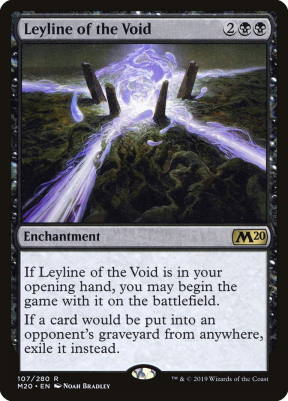
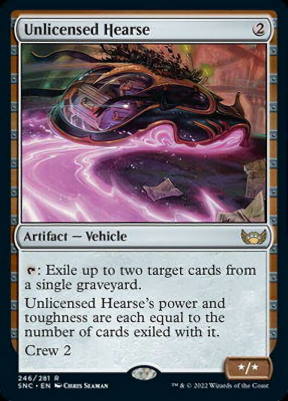
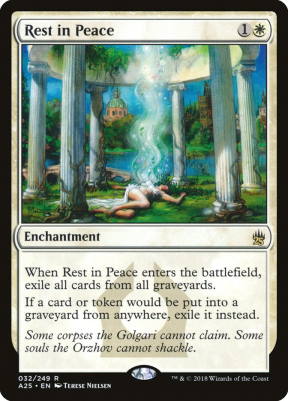
Graveyard hate is probably the number one thing you want to be bringing in post-board. As mentioned, Murktide can win even without the namesake card, and you do have to address the other portions of the deck. However, taking out the graveyard slows the deck down considerably and makes it easier for you to worry about those other parts.
Whatever graveyard hate you have in your sideboard should do fine. But it’s worth mentioning that if you have a single-use effect like Tormod’s Crypt or Relic of Progenitus you should use it sooner rather than later. Don’t get greedy and wait too long – Get what you can out of the way when you can.
Removal Spells
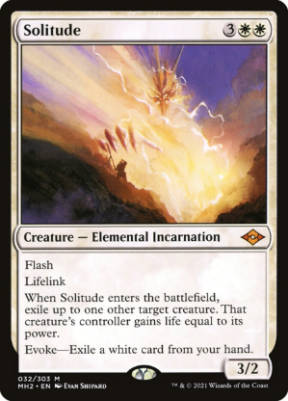
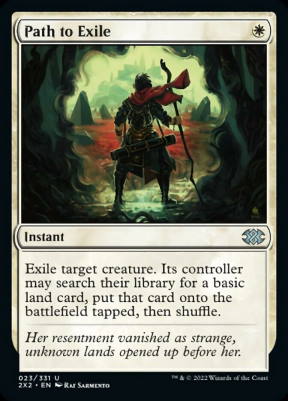
Being able to deal with Murktide Regent if/when it hits the table is also very important. That said, most commonly played removal spells in Modern won’t do the job. For example, good Murktide pilots will cast them outside the range of Lightning Bolt, Unholy Heat, and Fury.
While cards like Prismatic Ending and Fatal Push come up short due to the high mana cost. In my experience, Path to Exile and Solitude are some of the best answers in the matchup.
Bounce Spells
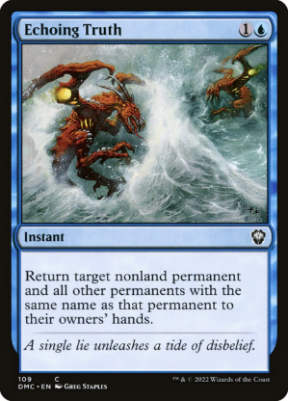
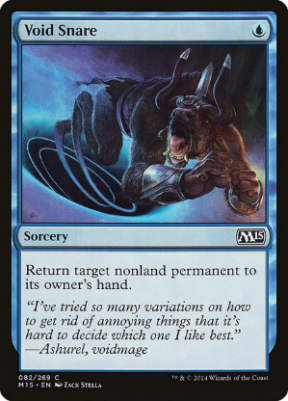
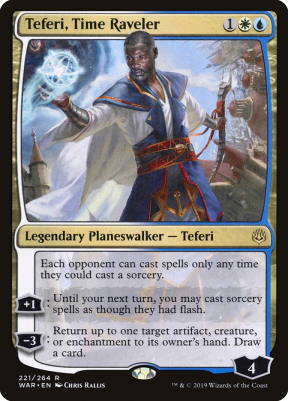
If you have cards like Echoing Truth, Brazen Borrower, or Teferi, Time Raveler in your sideboard, they can be useful to bring in and use to bounce Murktide. Once they’ve exiled their graveyard to cast it, having to do it again takes some time.
Deck List
Murktide Regent
| Creatures (14) 4 Dragon’s Rage Channeler 3 Ledger Shredder 3 Murktide Regent 4 Ragavan, Nimble Pilferer Enchantment (2) 2 Blood Moon Instant (17) 4 Consider 4 Counterspell 3 Lightning Bolt 2 Spell Pierce 4 Unholy Heat Sorcery (4) 4 Expressive Iteration Artifact (4) 4 Mishra’s Bauble Land (19) 1 Fiery Islet 2 Flooded Strand 2 Misty Rainforest 1 Otawara, Soaring City 2 Polluted Delta 1 Scalding Tarn 3 Snow-Covered Island 4 Spirebluff Canal 3 Steam Vents | Sideboard (15) 1 Abrade 2 Dress Down 3 Engineered Explosives 3 Flusterstorm 2 Mystical Dispute 2 Subtlety 2 Unlicensed Hearse |
Other Articles Like This One
If you’re interested in understanding other popular decks in the Modern format check these out.
End Step
So, there you have it my friends – A full breakdown of the current Modern Murktide deck. Hopefully, you now have a better understanding of the deck, how it plays, and the thought process behind the card choices. As well as come away with more tools to beat the deck when you come out across it. Until next time, may all your opening hands be great.
